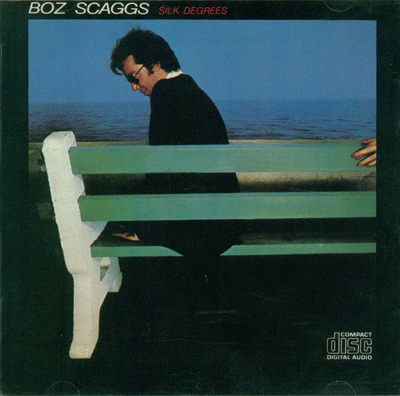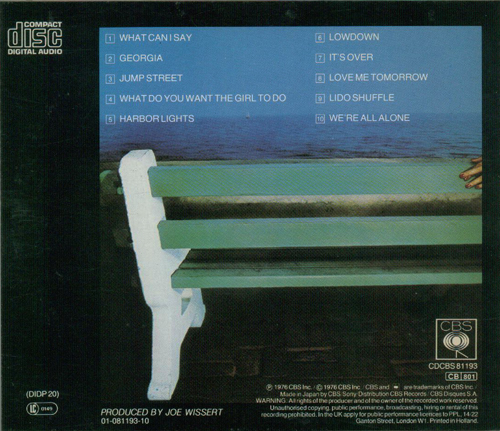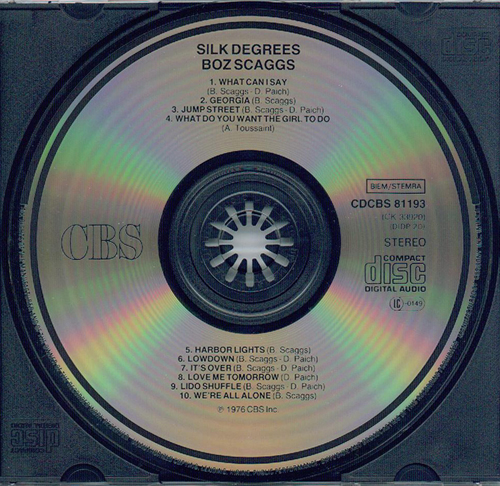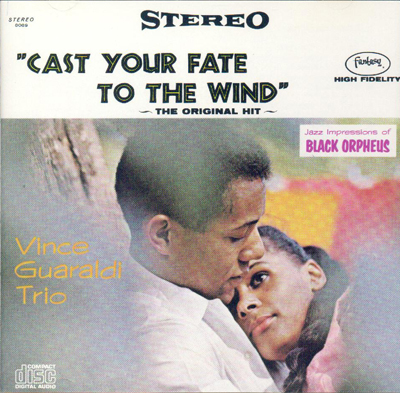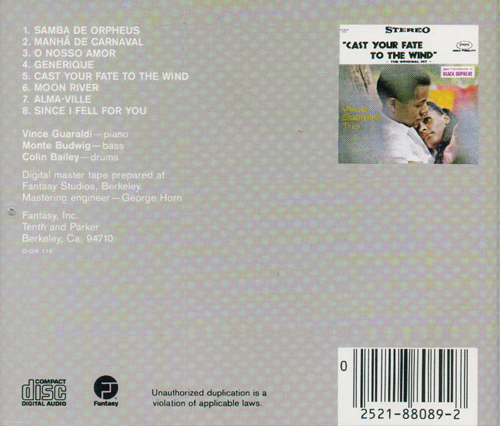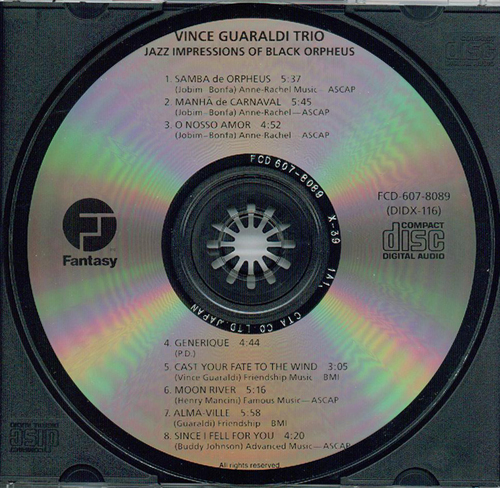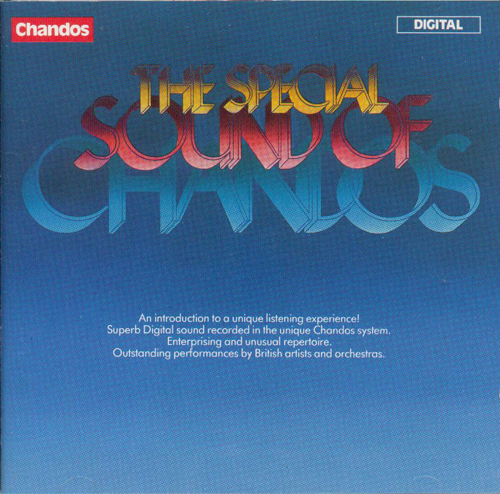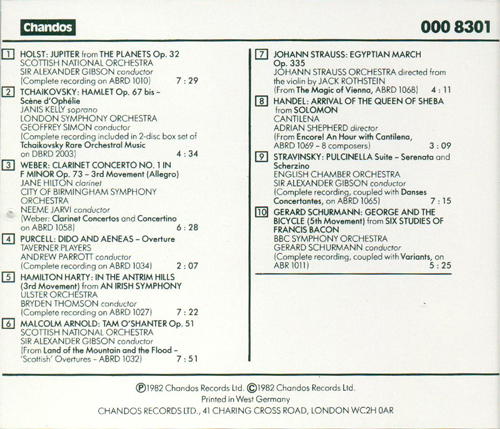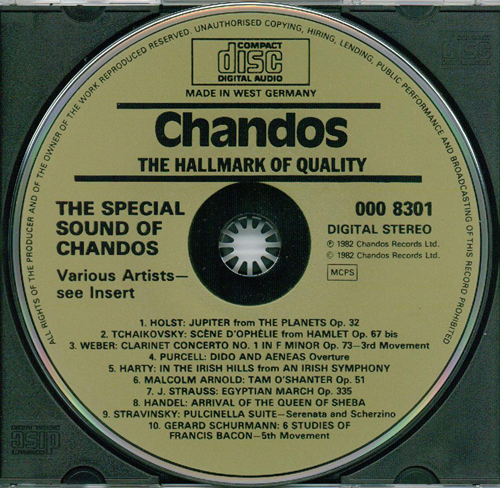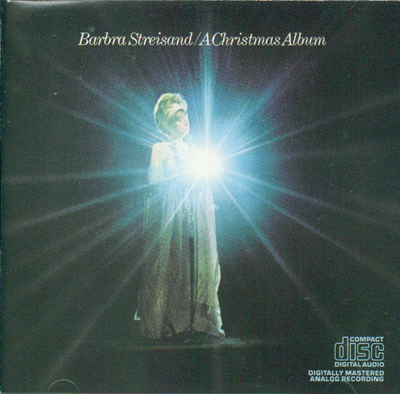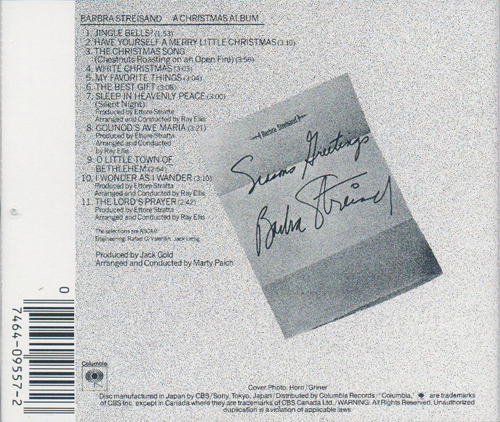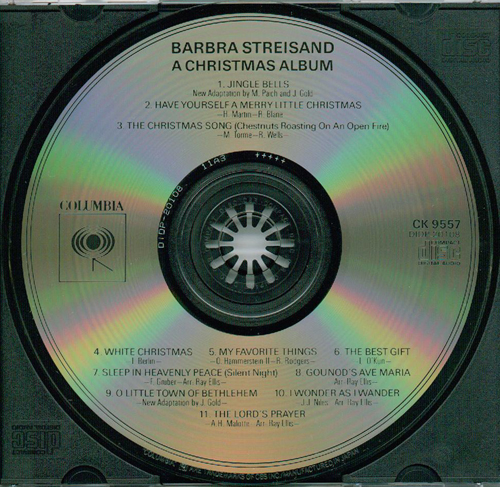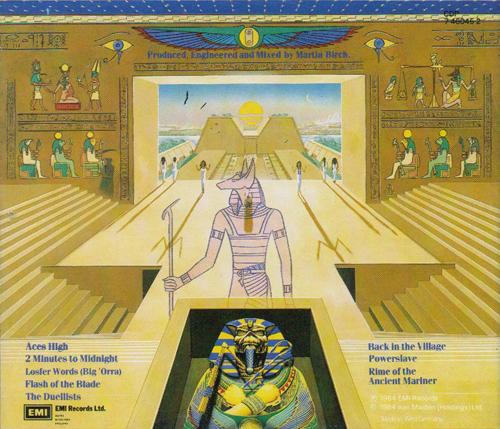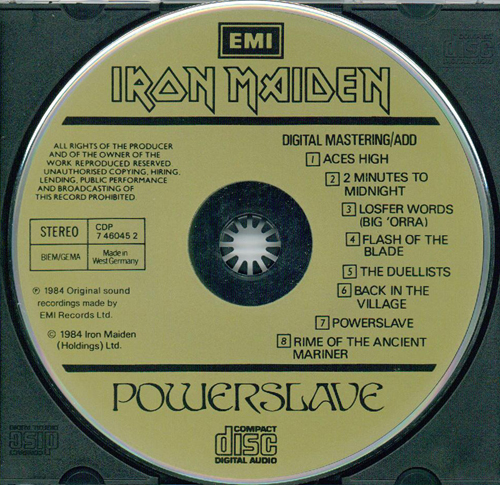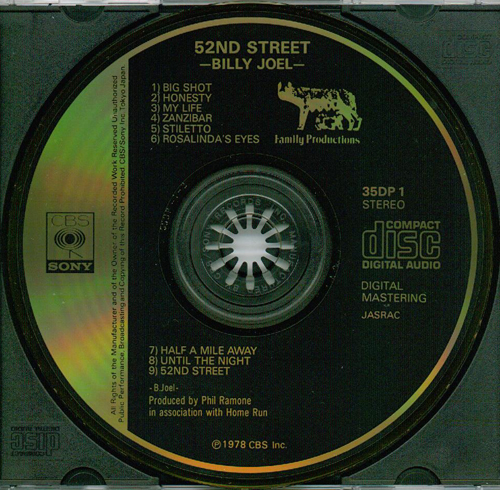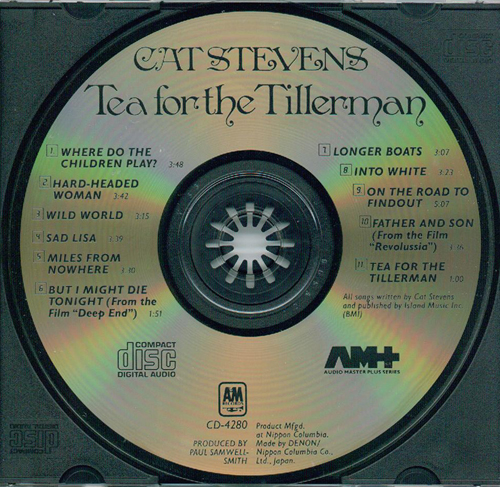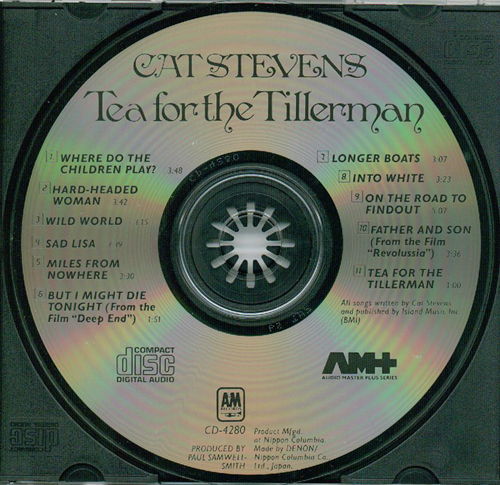ORDER Soma ~ Soma NO RX OVERNIGHT Getz/Gilberto">The original West German pressing of http___www.bigleaguekickball.com_category_press_ soma cod Getz/Gilberto
March 24th, 2013
Stan Getz has gone down as one of the great jazz tenor sax players. His deep, lush tone is instantly recognizable. Getz broke onto the jazz scene in the 1940s and ’50s. In the ’50s, he released several well-known albums and recorded with such legends as Dizzy Gillespie, Oscar Peterson, Cal Tjader, and Gerry Mulligan. He is also credited with discovering piano great Horace Silver in 1950. Despite his productivity and accomplishments in the first two decades, Getz is best known for his work in the early 1960s, in which he was instrumental (pardon the pun) in the bossa nova movement, which swept the jazz landscape.
The pinnacle of Getz’s bossa nova efforts was the 1964 collaboration with Antonio Carlos Jobim and João Gilberto released by Verve and simply titled Getz/Gilberto. This jazz staple is best known for its opening track, “The Girl From Ipanema”. The song was composed by Jobim and João Gilberto and features vocals by João and his wife, Astrud. Interestingly, Astrud Gilberto was not a professional musician at the time and was not intended to appear on the album. She is not even credited as a performer on the original LP, yet it is her sultry vocals that made “The Girl of Ipanema” a surprise hit and launched her lengthy singing career.
It should be no surprise that Getz/Gilberto was among the first Verve jazz albums to be released on CD. The original issue was pressed in West Germany and released under catalog number 810 048-2. For the collector, there are a handful of West German pressings to collect that vary by disc label design, channel orientation, and inserts.
The original West German pressing of Getz/Gilberto features a black paint coating with silver text. The channel orientation is incorrect in that Astrud Gilberto’s vocals on “The Girl From Ipanema” are in the right channel. The original tapes have Gilberto’s vocals in the left channel. Although various CDs have been released over the past 20 years with the incorrect right-channel orientation, subsequent West German pressings were released with the correct left-channel orientation. These later West German pressings will be featured in a subsequent post here in a few months.
The matrix code for the original West German pressing is “810048 2 05”. A West German pressing without the black paint coating (i.e., black text with an aluminum background) is found with this same matrix code and therefore with the same incorrect channel orientation. The black-paint pressing featured here is the rarer of the two. The matrix code format indicates this to be an early pressing. Note that there are no spaces in the 810 portion of the matrix code and also there is no dash before the 2. Later West German pressings with the correct channel orientation have a matrix code of the form “810 048-2 XX”, with the last two numbers varying.
Although the channel orientation is incorrect on the original West German pressing, the sound is still very good. Shown below is the cover, back insert, and West German black-paint pressing associated with the original issue of Getz/Gilberto. Details about the unique features of the inserts for this first issue are provided in the figure captions.

The cover for the original West German pressing of Stan Getz and João Gilberto featuring Antonio Carlos Jobim Getz/Gilberto (Verve, catalog number 810 048-2). The catalog number does not appear on the cover. The cover for some later West German pressings has the catalog number printed in the top right corner.
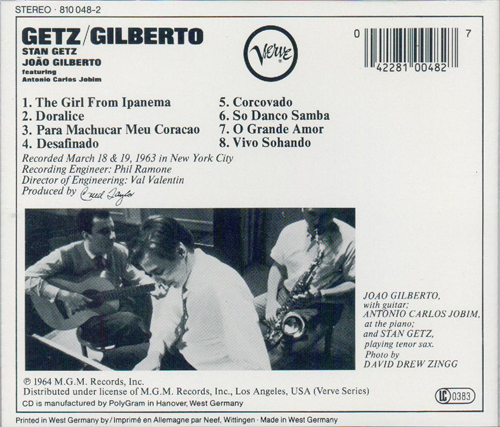
The back insert for the original West German pressing of Stan Getz and João Gilberto featuring Antonio Carlos Jobim Getz/Gilberto (Verve, catalog number 810 048-2). The track times do not appear next to the song titles. The back insert for some later West German pressings has the track times printed next to the song titles.
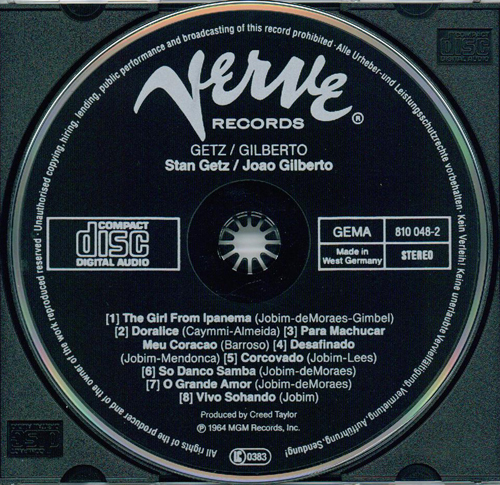
The original West German pressing of Stan Getz and João Gilberto featuring Antonio Carlos Jobim Getz/Gilberto (Verve, catalog number 810 048-2). This disc is unique by virtue of the black paint coating. Later and more common West German pressings have black text with an aluminum background. The matrix code on this black-paint pressing is “810048 2 05”.
